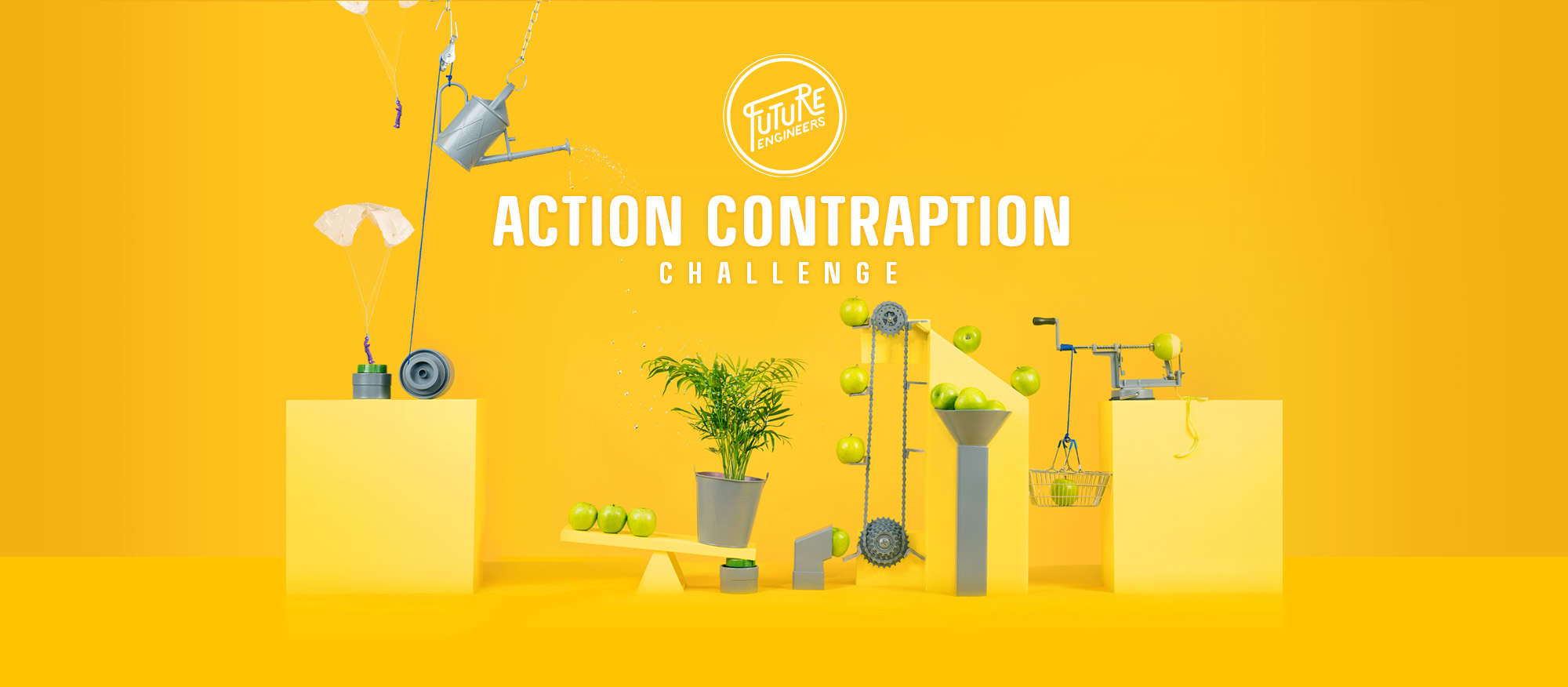


Use your engineering skills to create an Action Contraption machine that wows the judges! If you are a K-12 student in the United States, your challenge is to build a machine that can produce a chain reaction using found items such as dominos, paper towel rolls, straws, marbles, and/or much more! Your machine must begin and end with a domino (store-bought or homemade) falling and should include at least two simple machines, such as an inclined plane or pulley system (see the EDUCATION RESOURCES to learn more about simple machines). To enter, submit a video of your machine, a short design description, a title, and a thumbnail image. Your submission will be judged without sound, so be sure to focus on the visual elements of your action contraption.
Individual or team entries (up to 4 members) are allowed and will be judged in three grade-level categories: K-5, 6-8, and 9-12. Please do not include faces, names, or voices in your entry, and remember to review the CONTEST RULES and DESIGN GUIDELINES for all challenge details.
Get creative and start engineering!
An inclined plane is a simple machine that is a flat, sloped surface used to move an object to a higher or lower place. Ramps, stairs, and sloping roads are just a few examples of inclined planes. Can you think of any others? Make a list of inclined planes and think about how to build them into your action contraption machine. What materials would you use, and what object/s would your inclined plans move?
Whether you ride a bicycle, bus, or car, these vehicles all use a wheel and axle. The wheel and axle is a wheel connected to an axle (rod) that rotates the wheel producing a rotational force that can move or lift objects. What are some other examples of the wheel and axle? How could you incorporate the wheel and axle machine into your design?
A lever is a simple machine with a beam resting on a point of support or fulcrum (pivot point)-think teeter-totter. If you were to sit on one end of the teeter-totter, the other end would lift up. Levers can use a small force to move a much bigger force, making it easier to move objects, remove tight objects, and break them. Some examples of levers are nutcrackers, scissors, pliers, brooms, and baseball bats. What materials could you use as levers, and how might they fit into your design?
A pulley is a simple machine with a rope that loops over a wheel with a groove. One part of the rope is attached to the object (load), and when you pull on the other side of the rope, the wheel turns, moving the load. Pulleys are good for moving objects in hard-to-reach places and make the work of moving heavy loads a lot easier. Pulleys can let you move loads down, up, or sideways. Other examples of things that have pulleys are water wells, flag poles, window blinds, and theater curtains. If you choose a pulley as one of your two simple machines, how will you build it and use it in your machine’s design?
A wedge is an object made of two inclined planes or a curved surface reaching a point. Wedges can lift objects up, break them apart or hold them in place. Common examples include a doorstop, nail, chisel, fork, and push pin. Can you think of any others? Make a list of wedges and think about how to build them into your action contraption machine.
A screw is an inclined plane wrapped around a cylinder. People commonly use screws to fasten things, dig holes, move objects or hold them together. A few examples of screws are jar lids, drill bits, bolts, car jacks, and the end of a screw in a light bulb. Think about how you could incorporate a screw into your design.
Rube Goldberg was a Pulitzer Prize-winning American cartoonist, innovator, author, sculptor, and inventor. He is best known for his cartoons, which were elaborate pictures of extremely complex action contraption machines that performed simple tasks. Check them out for design inspiration!
Future Engineers hosts online contests and challenges for K-12 students, including the recent Mars 2020 "Name the Rover" contest. This challenge platform was developed with support from the U.S. Department of Education, and all challenges are free for student/classroom participation.
Thank you for your interest in contacting Future Engineers. We look forward to connecting with you!
General Inquiries
support@futureengineers.orgSponsorship Inquiries
sponsor@futureengineers.org